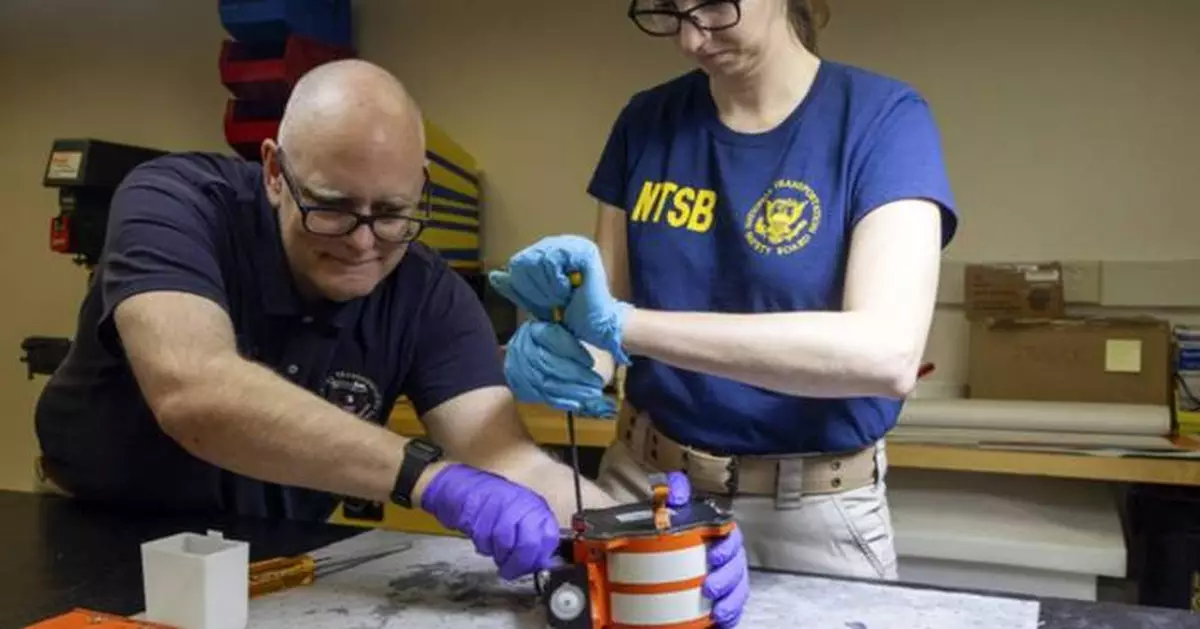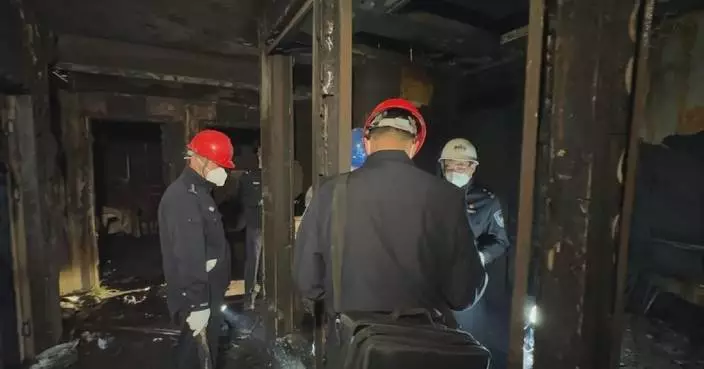It's one of the most important pieces of forensic evidence following a plane crash: The so-called “black box."
There are actually two of these remarkably sturdy devices: the cockpit voice recorder and the flight data recorder. And they're typically orange, not black.
Click to Gallery
In this image provided by the U.S. Coast Guard, wreckage is seen in the Potomac River near Ronald Reagan Washington National Airport, Thursday, Jan. 30, 2025 in Washington. (Petty Officer 2nd Class Taylor Bacon, U.S. Coast Guard via AP)
In this image provided by the National Transportation Safety Board, NTSB investigators deliver the cockpit voice recorder and flight data recorder to NTSB headquarters in Washington, Thursday, Jan. 30, 2025, that were recovered from the American Airlines passenger jet that crashed with an Army helicopter Wednesday night near Ronald Reagan Washington National Airport. (NTSB via AP)
In this image provided by the National Transportation Safety Board, a NTSB investigator examine cockpit voice recorder and flight data recorder in Washington, Thursday, Jan. 30, 2025, recovered from the American Airlines passenger jet that crashed with an Army helicopter Wednesday night near Ronald Reagan Washington National Airport. (NTSB via AP)
In this image provided by the National Transportation Safety Board, NTSB investigators examine the flight data recorder in Washington, Thursday, Jan. 30, 2025, recovered from the American Airlines passenger jet that crashed with an Army helicopter Wednesday night near Ronald Reagan Washington National Airport. (NTSB via AP)
In this image provided by the National Transportation Safety Board, NTSB investigators examine cockpit voice recorder and flight data recorder in Washington, Thursday, Jan. 30, 2025, recovered from the American Airlines passenger jet that crashed with an Army helicopter Wednesday night near Ronald Reagan Washington National Airport. (NTSB via AP)
Federal investigators on Friday recovered the black boxes from the passenger jet that crashed in the Potomac River just outside Washington on Wednesday, while authorities were still searching for similar devices in the military helicopter that also went down.
One recovered flight data recorder was in good condition and its information is expected to be downloaded shortly. Water had gotten inside the cockpit voice recorder, which will make downloading the data more difficult. The collision killed 67 people in the deadliest U.S. aviation disaster since 2001.
Here is an explanation of what black boxes are and what they can do:
The cockpit voice recorder and the flight data recorder are tools that help investigators reconstruct the events that lead up to a plane crash.
They're orange in color to make them easier to find in wreckage, sometimes at great ocean depths. They're usually installed a plane's tail section, which is considered the most survivable part of the aircraft, according to the National Transportation Safety Board’s website.
They're also equipped with beacons that activate when immersed in water and can transmit from depths of 14,000 feet (4,267 meters). While the battery that powers the beacon will run down after about one month, there’s no definitive shelf-life for the data itself, NTSB investigators told The Associated Press in 2014.
For example, black boxes of an Air France flight that crashed in the Atlantic Ocean in 2009 were found two years later from a depth of more than 10,000 feet, and technicians were able to recover most of the information.
If a black box has been submerged in seawater, technicians will keep them submerged in fresh water to wash away the corrosive salt. If water seeps in, the devices must be carefully dried for hours or even days using a vacuum oven to prevent memory chips from cracking.
The electronics and memory are checked, and any necessary repairs made. Chips are scrutinized under a microscope.
The cockpit voice recorder collects radio transmissions and sounds such as the pilot’s voices and engine noises, according to the NTSB's website.
Depending on what happened, investigators may pay close attention to the engine noise, stall warnings and other clicks and pops, the NTSB said. And from those sounds, investigators can often determine engine speed and the failure of some systems.
Investigators are also listening to conversations between the pilots and crew and communications with air traffic control. Experts make a meticulous transcript of the voice recording, which can take up to a week.
The flight data recorder monitors a plane's altitude, airspeed and heading, according to the NTSB. Those factors are among at least 88 parameters that newly built planes must monitor.
Some can collect the status of more than 1,000 other characteristics, from a wing's flap position to the smoke alarms. The NTSB said it can generate a computer animated video reconstruction of the flight from the information collected.
NTBS investigators told the AP in 2014 that a flight data recorder carries 25 hours of information, including prior flights within that time span, which can sometimes provide hints about the cause of a mechanical failure on a later flight. An initial assessment of the data is provided to investigators within 24 hours, but analysis will continue for weeks more.
At least two people have been credited with creating devices that record what happens on an airplane.
One is French aviation engineer François Hussenot. In the 1930s, he found a way to record a plane's speed, altitude and other parameters onto photographic film, according to the website for European plane-maker Airbus.
In the 1950s, Australian scientist David Warren came up with the idea for the cockpit voice recorder, according to his 2010 AP obituary.
Warren had been investigating the crash of the world’s first commercial jet airliner, the Comet, in 1953, and thought it would be helpful for airline accident investigators to have a recording of voices in the cockpit, the Australian Department of Defence said in a statement after his death.
Warren designed and constructed a prototype in 1956. But it took several years before officials understood just how valuable the device could be and began installing them in commercial airlines worldwide. Warren's father had been killed in a plane crash in Australia in 1934.
Some have suggested that it stems from Hussenot's device because it used film and “ran continuously in a light-tight box, hence the name ‘black box,'” according to Airbus, which noted that orange was the box's chosen color from the beginning to make it easy to find.
Other theories include the boxes turning black when they get charred in a crash, the Smithsonian Magazine wrote in 2019.
“The truth is much more mundane,” the magazine wrote. “In the post-World War II field of electronic circuitry, black box became the ubiquitous term for a self-contained electronic device whose input and output were more defining than its internal operations.”
The media continues to use the term, the magazine wrote, "because of the sense of mystery it conveys in the aftermath of an air disaster.”

In this image provided by the U.S. Coast Guard, wreckage is seen in the Potomac River near Ronald Reagan Washington National Airport, Thursday, Jan. 30, 2025 in Washington. (Petty Officer 2nd Class Taylor Bacon, U.S. Coast Guard via AP)
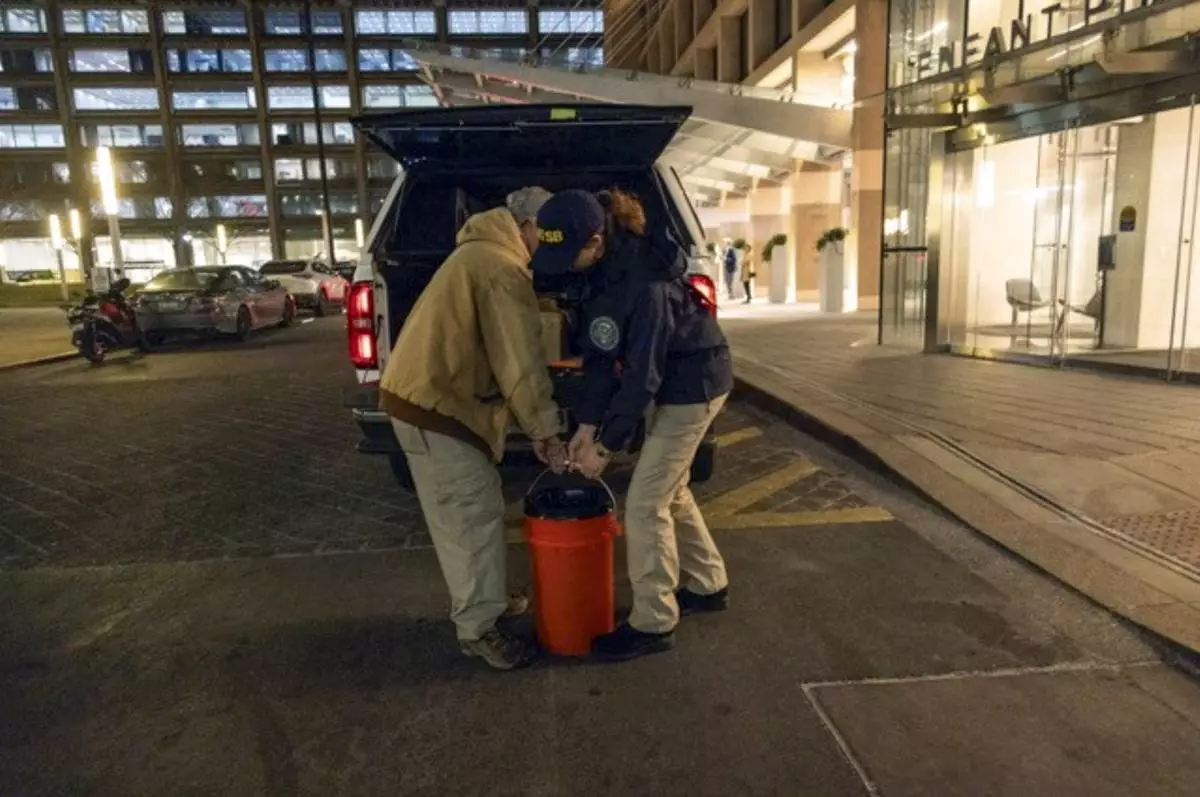
In this image provided by the National Transportation Safety Board, NTSB investigators deliver the cockpit voice recorder and flight data recorder to NTSB headquarters in Washington, Thursday, Jan. 30, 2025, that were recovered from the American Airlines passenger jet that crashed with an Army helicopter Wednesday night near Ronald Reagan Washington National Airport. (NTSB via AP)
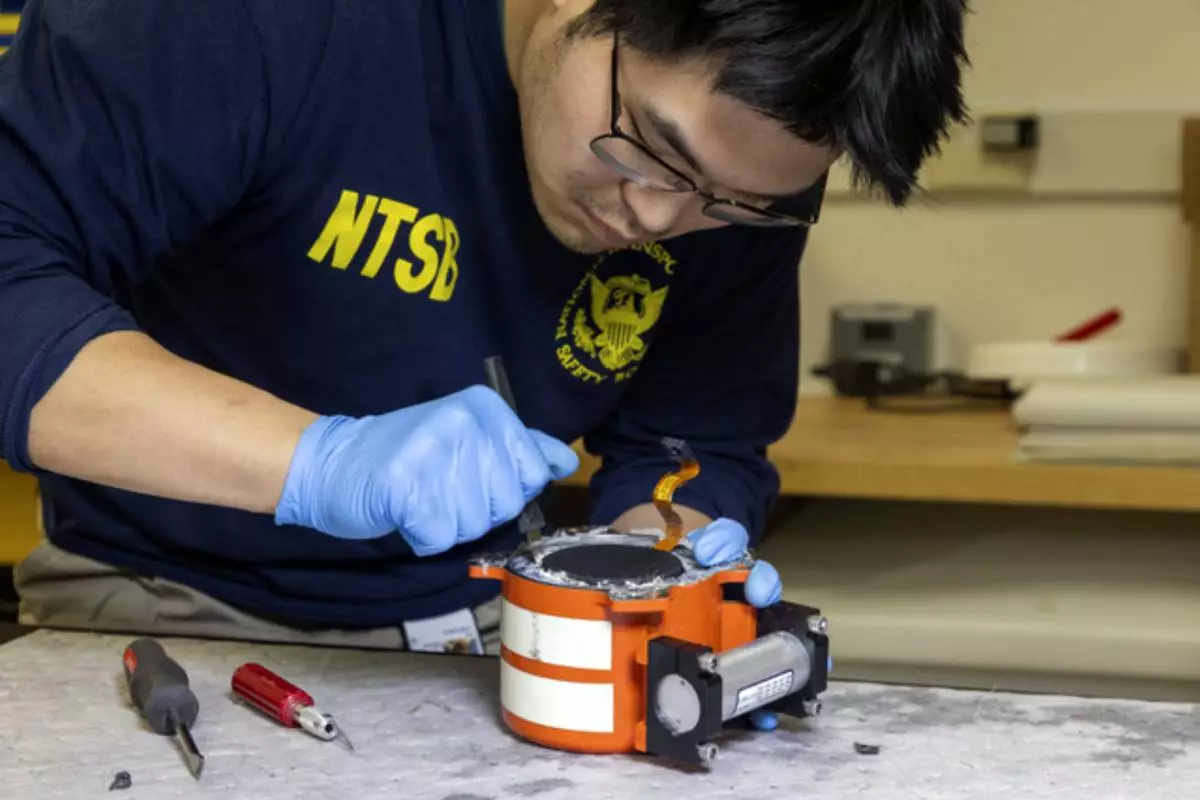
In this image provided by the National Transportation Safety Board, a NTSB investigator examine cockpit voice recorder and flight data recorder in Washington, Thursday, Jan. 30, 2025, recovered from the American Airlines passenger jet that crashed with an Army helicopter Wednesday night near Ronald Reagan Washington National Airport. (NTSB via AP)
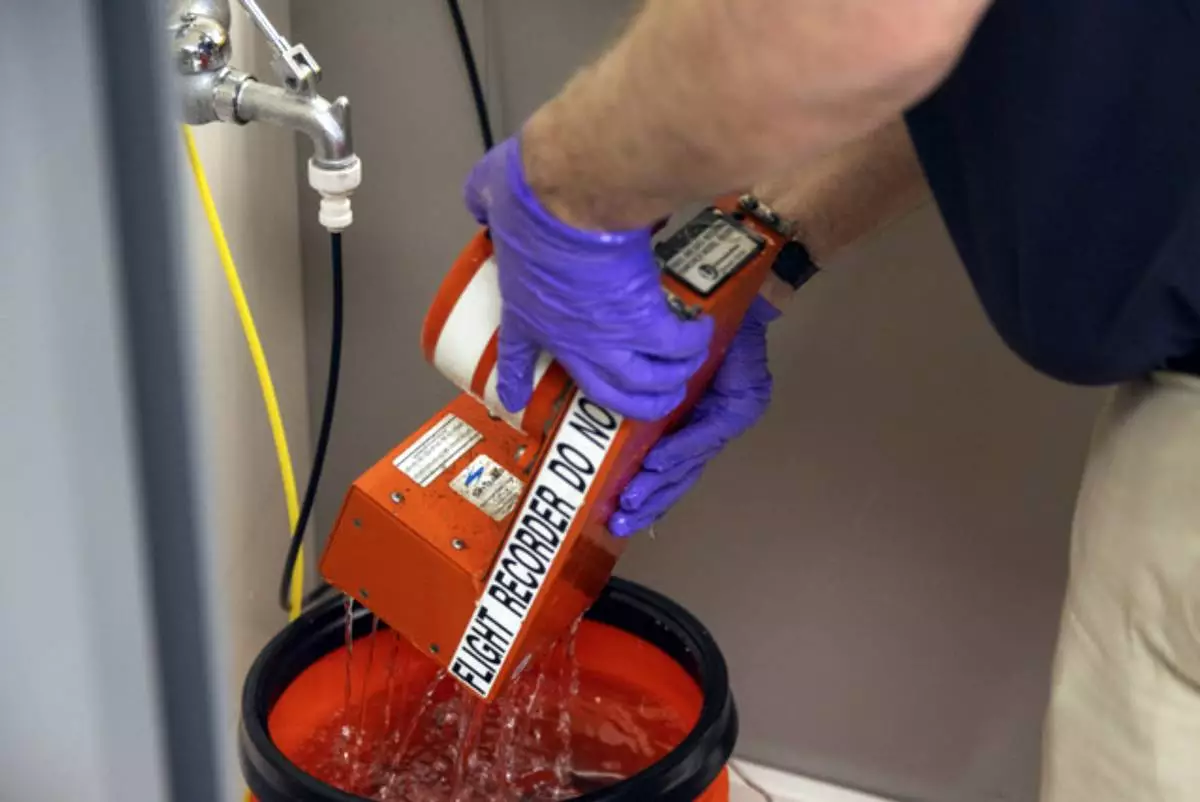
In this image provided by the National Transportation Safety Board, NTSB investigators examine the flight data recorder in Washington, Thursday, Jan. 30, 2025, recovered from the American Airlines passenger jet that crashed with an Army helicopter Wednesday night near Ronald Reagan Washington National Airport. (NTSB via AP)
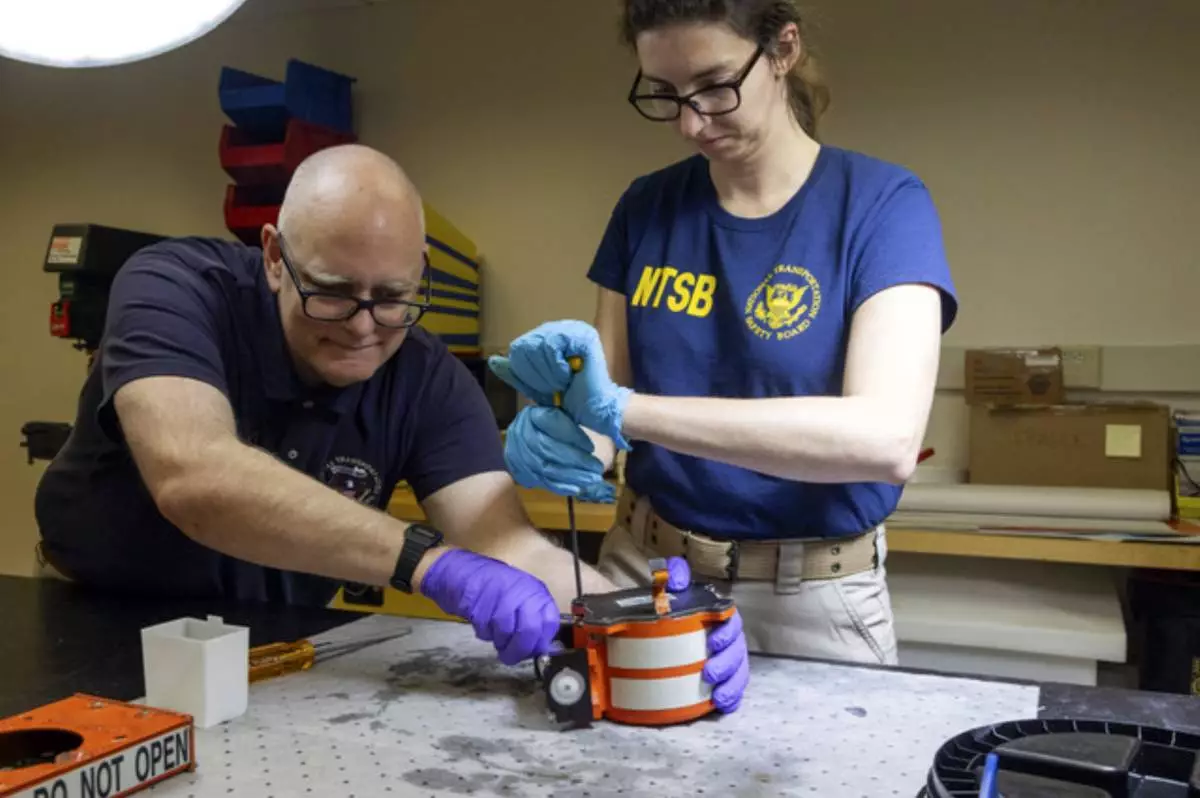
In this image provided by the National Transportation Safety Board, NTSB investigators examine cockpit voice recorder and flight data recorder in Washington, Thursday, Jan. 30, 2025, recovered from the American Airlines passenger jet that crashed with an Army helicopter Wednesday night near Ronald Reagan Washington National Airport. (NTSB via AP)
NEW YORK (AP) — The Campaign Against Hunger was already struggling to feed thousands of families a week when the Trump administration pulled more than $1.3 million in grants.
Demand has only increased at the New York nonprofit since the city emerged from the COVID-19 pandemic and the related economic insecurity. In a first for the pantry, however, it isn't just the jobless lining up for its fresh produce and meats. It's working people, too.
Food banks typically see the most need during periods of high unemployment and yet the U.S. is facing down a hunger crisis during a relatively resilient labor market. The latest U.S. Department of Agriculture research showed there were one million more food insecure households in 2023 than 2022.
Now, income stagnation and rising living costs are sending wage earners to food banks across the country — all as the federal government shuts off funding streams that provide millions with healthier, harder-to-get groceries. The squeeze comes as Republicans discuss budget plans that hunger relief groups fear will deepen the crisis by slashing food stamp spending.
“We were already in a bad state. But now we have been plunged head down into a crisis that should never have been,” said Melony Samuels, executive director of The Campaign Against Hunger. “If major cuts like these continue, I would imagine that our doors will close.”
Funding cuts began threatening food availability in March.
The USDA halted $500 million of expected food deliveries and cut another $1 billion for hunger relief programs supporting local producers. The Department of Homeland Security also rescinded Federal Emergency Management Agency grants for local governments and nonprofits — including The Campaign Against Hunger — to shelter and feed newly arrived noncitizen migrants after their release.
“Secretary Noem has directed FEMA to implement additional controls to ensure that all grant money going out is consistent with law and does not go to fraud, waste or abuse, as in the past,” DHS Assistant Secretary Tricia McLaughlin said in a statement.
Samuels said her nonprofit is limiting normally bimonthly food distributions to once a month due to the lost funds, which are being withheld amid what she called “baseless allegations" from DHS that the nonprofit might have broken laws against transporting migrants in the country illegally.
That means fewer nutritious options for the dozens of people — some holding babies, many pushing carts — who recently waited to shop inside The Campaign Against Hunger's Brooklyn mock-store on an overcast weekday in April.
Longtime Brooklyn resident Kim Dennis has noticed the uptick in need. On top of her Supplemental Nutrition Assistance Program benefits, the 65-year-old retiree visits The Campaign Against Hunger twice each month for groceries like potatoes and pork chops that are more difficult to find at other food banks often filled with canned goods.
“The lines are getting a lot, a lot, a lot, a lot," Dennis said, partially due to recent immigration waves. “Everything is going up and a lot of us cannot afford."
Over half of responding food banks told Feeding America they served more neighbors this February than the same month last year.
Christiana Santamaria said she visits a local food bank in Alameda, California each week to feed herself, her husband and their daughter. They struggle to cover food costs, internet bills and car payments with a monthly household income of nearly $3,000.
“I mean, my husband, he works full-time. He has a quote-unquote ‘good job.’ But I mean, it’s the military. And if even the military can’t afford things, that’s sad," she said.
The country's largest hunger-relief network is also feeling the strain.
Feeding America consists of more than 200 member food banks. Their assistance is often easier to obtain than government benefits such as SNAP that some advocates say require burdensome applications. Many families put dinner on the table through a combination of the two — a strategy food bank leaders say could be upended if Republican lawmakers cut SNAP allotments or expand work requirements.
Houston Food Bank CEO Brian Greene expects his organization, which operates the largest distribution among Feeding America partners, to lose somewhere around $4 million this year.
The government pullbacks amp up that pressure. If the cuts stay, Greene said, the projected losses include $3 million for food storage and distribution, $7 million supporting local farmers and producers, and 40 tractor trailer loads a month carrying key produce and protein.
Greene is trying to make up the difference through donations. But he's realistic. Surveys consistently place American philanthropy around 2% of GDP and social services receive just a sliver of that. Even if charitable contributions spiked, he said, they couldn't replace federal support.
That makes SNAP availability even more critical to alleviating hunger. Cutting the program by 11%, he said, would be the equivalent of wiping out every food bank in the United States.
Food purchases are funded through the Farm Bill. Trump's trade war has also generated more money for USDA to buy food commodities under a 1935 program that dedicates tariff collections toward “bonus” food purchases.
What concerns hunger relief groups, however, is that the suspended purchases are covered by a different funding pot that allows the USDA great discretion when responding to economic disruptions. The first Trump administration put more than $2 billion of those funds toward The Emergency Food Assistance Program, or TEFAP. However, USDA is now reviewing $500 million allocated last fall for the program.
Federal commodities programs provide some of the most reliable supplies of proteins. Vince Hall, who leads government relations for Feeding America, said TEFAP-purchased foods account for more than 20% of everything distributed by the entire network. That number rises in rural communities — where the cost of reaching distant populations is higher and donated products are less available.
The impact trickles down to smaller pantries that rely on larger food banks. Mother Hubbard's Cupboard is bracing for about 25% food reductions from a Feeding America partner in Bloomington, Indiana.
“What we're likely to see then would be a dip in what are really the nutritional staples that we expect in the pantry,” said Mother Hubbard’s Cupboard President Megan Betz.
A 2022 study measuring food pantries' value suggests participating families obtain between $600 and $1000 annually from them. That's equivalent to a couple months of food for some low-income households, according to co-author David Just, an applied economics professor at Cornell University.
The centers helped cushion families from the pandemic's economic shocks. But food insecurity started rising as the government rolled back its pandemic-era assistance.
Need has surpassed the height of COVID-19, according to Alameda County Community Food Bank Executive Director Reggie Young. The weight of the Oakland nonprofit's annual food distributions has doubled its pre-pandemic totals.
Food insecurity nationwide is the highest it's been in about a decade, according to Just, making it “potentially a really difficult time to start cutting food assistance through the pantries.”
“This could cause some pretty significant pain,” he said. "And I don’t know that we’re delivering something more efficient in the end.”
Associated Press journalist Terry Chea in San Francisco contributed to this report.
Associated Press coverage of philanthropy and nonprofits receives support through the AP’s collaboration with The Conversation US, with funding from Lilly Endowment Inc. The AP is solely responsible for this content. For all of AP’s philanthropy coverage, visit https://apnews.com/hub/philanthropy.
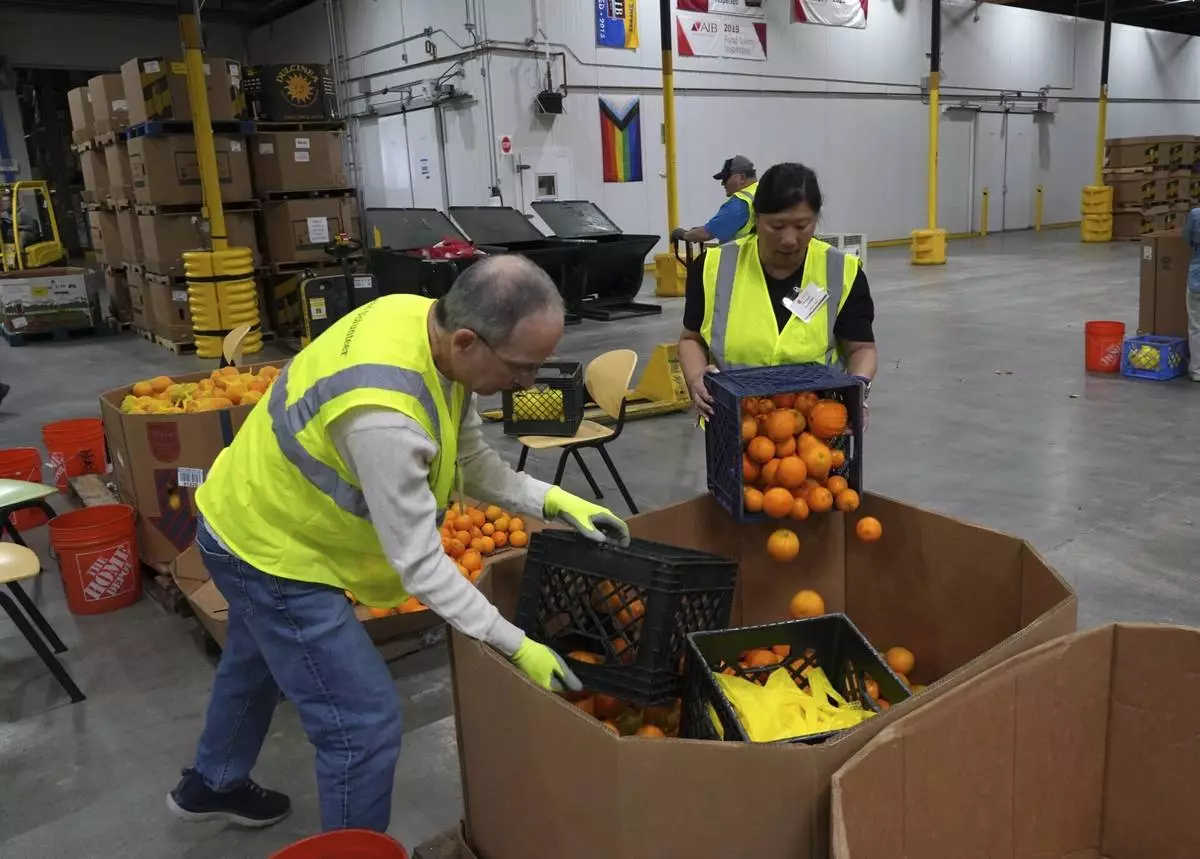
Volunteers pack produce at the Alameda County Community Food Bank in Alameda, Calif., on Friday, April 25, 2025. (AP Photo/Terry Chea)
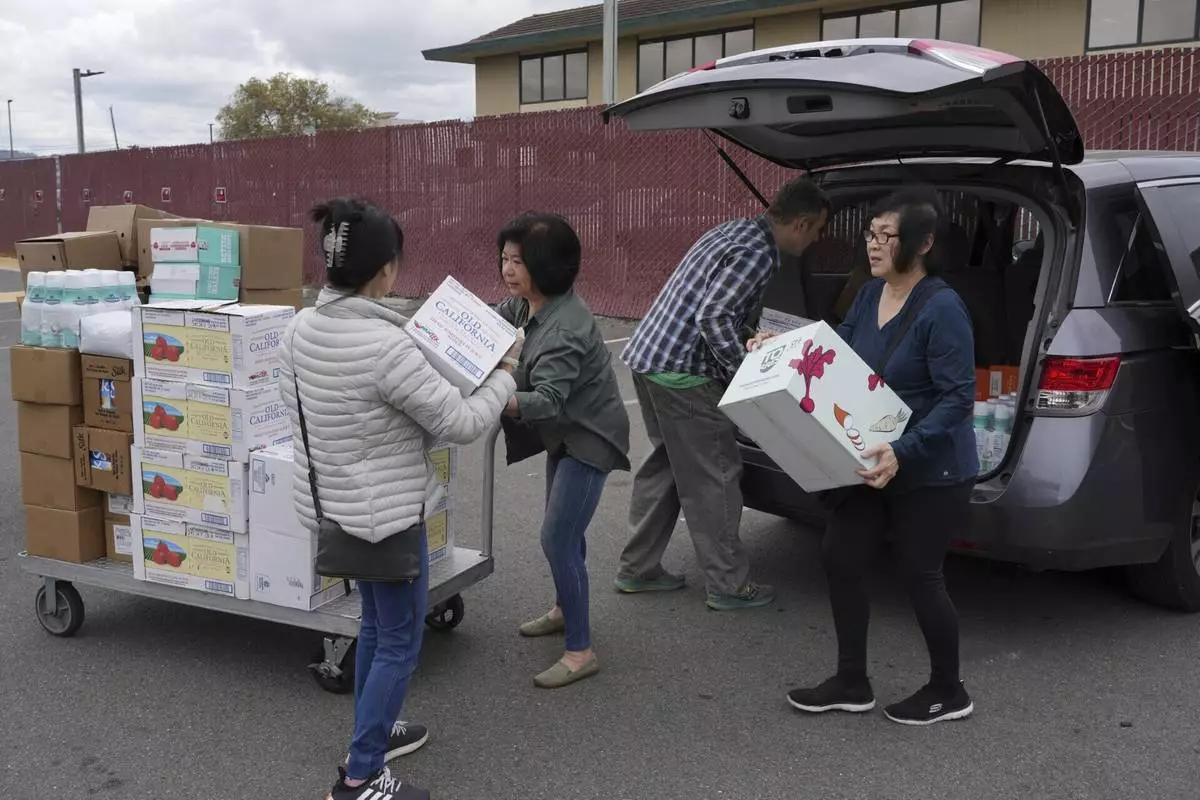
Church members pack groceries in van at the Alameda County Community Food Bank in Alameda, Calif., on Friday, April 25, 2025. (AP Photo/Terry Chea)
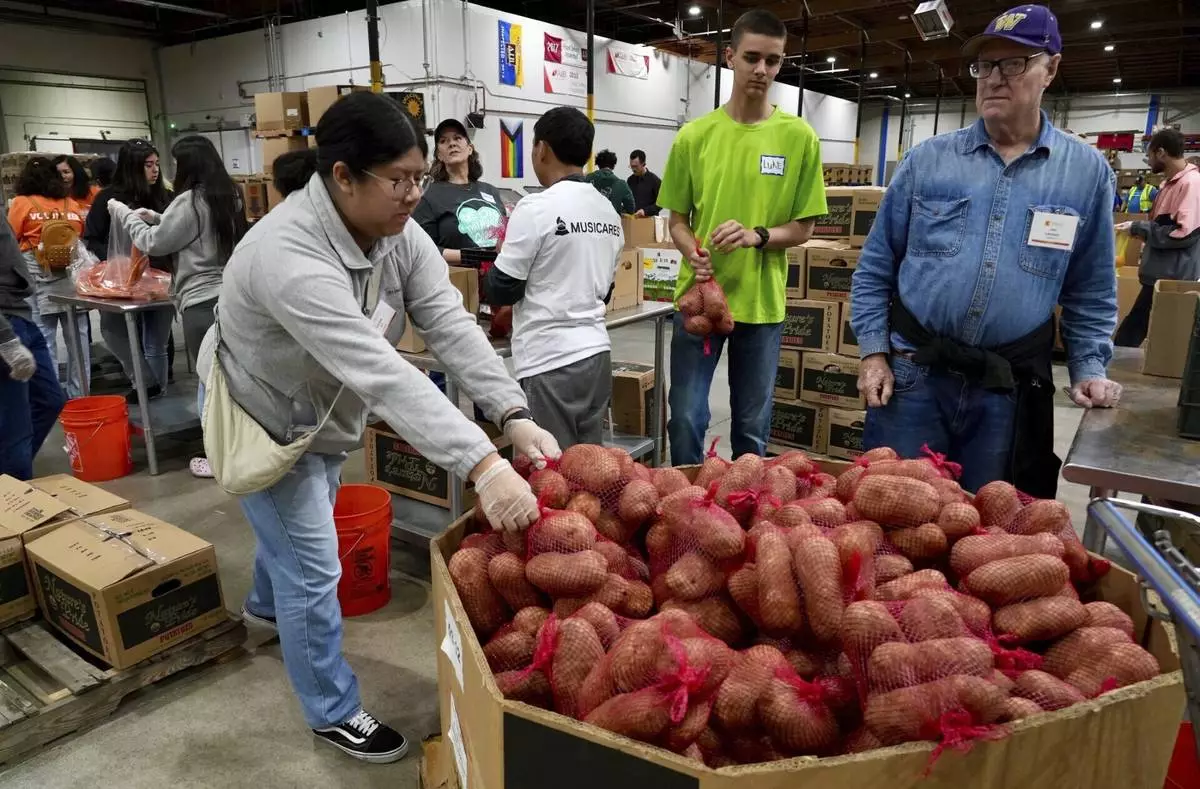
Volunteers pack produce at the Alameda County Community Food Bank in Alameda, Calif., on Friday, April 25, 2025. (AP Photo/Terry Chea)
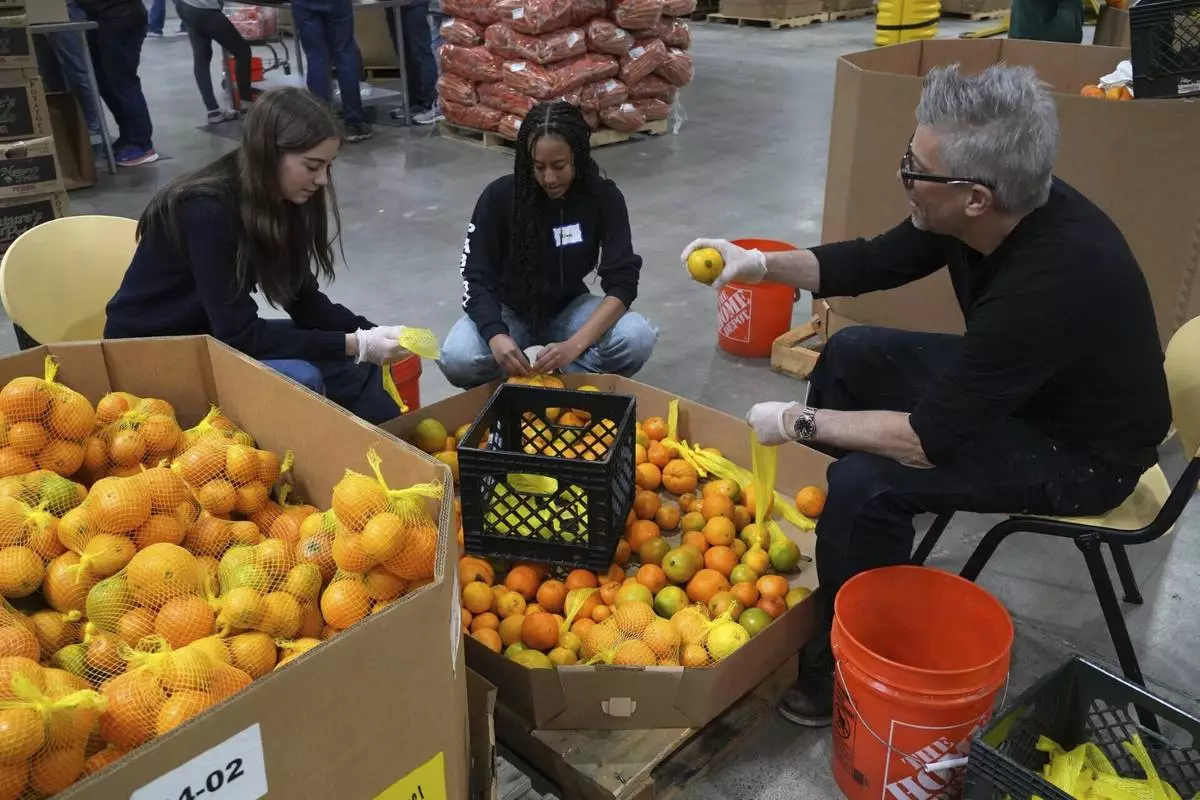
Volunteers pack produce at the Alameda County Community Food Bank in Alameda, Calif., on Friday, April 25, 2025. (AP Photo/Terry Chea)
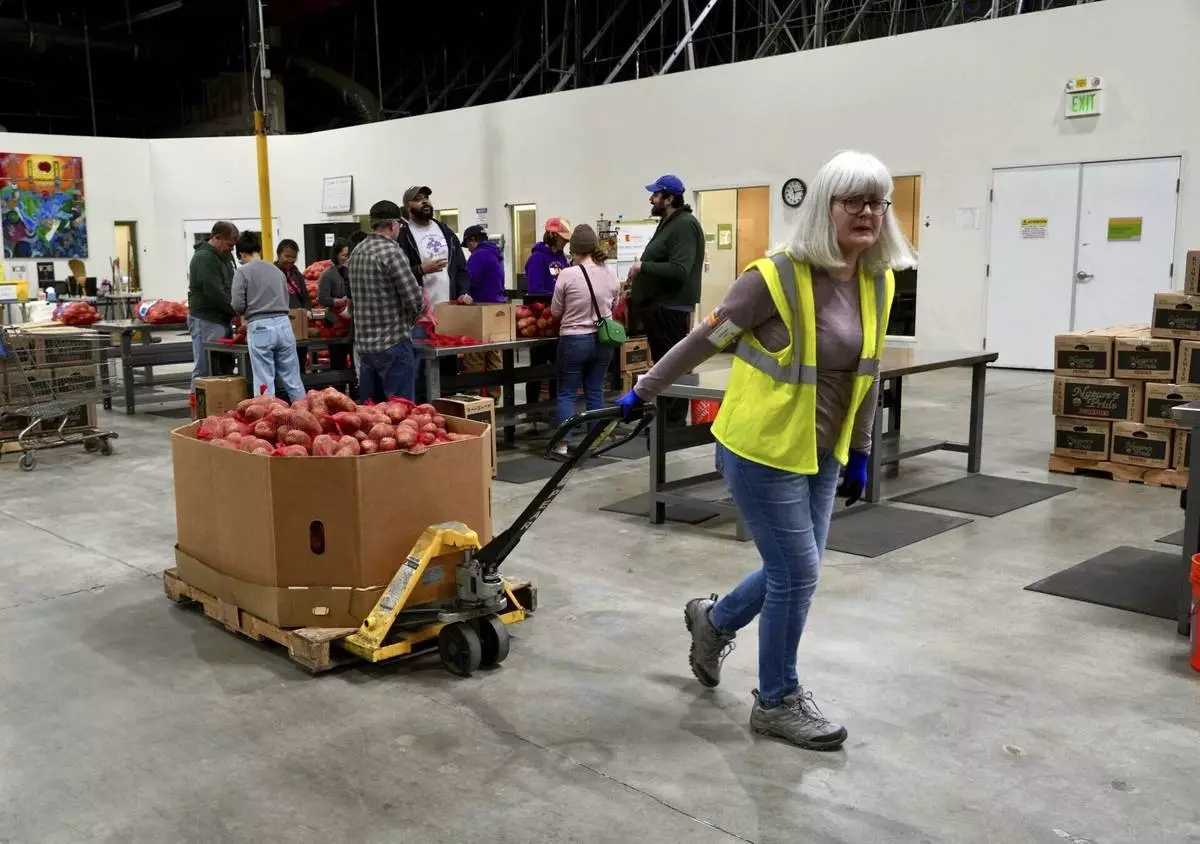
A volunteer pulls box of produce at the Alameda County Community Food Bank in Alameda, Calif., on Friday, April 25, 2025. (AP Photo/Terry Chea)

Volunteers pack produce at the Alameda County Community Food Bank in Alameda, Calif., on Friday, April 25, 2025. (AP Photo/Terry Chea)
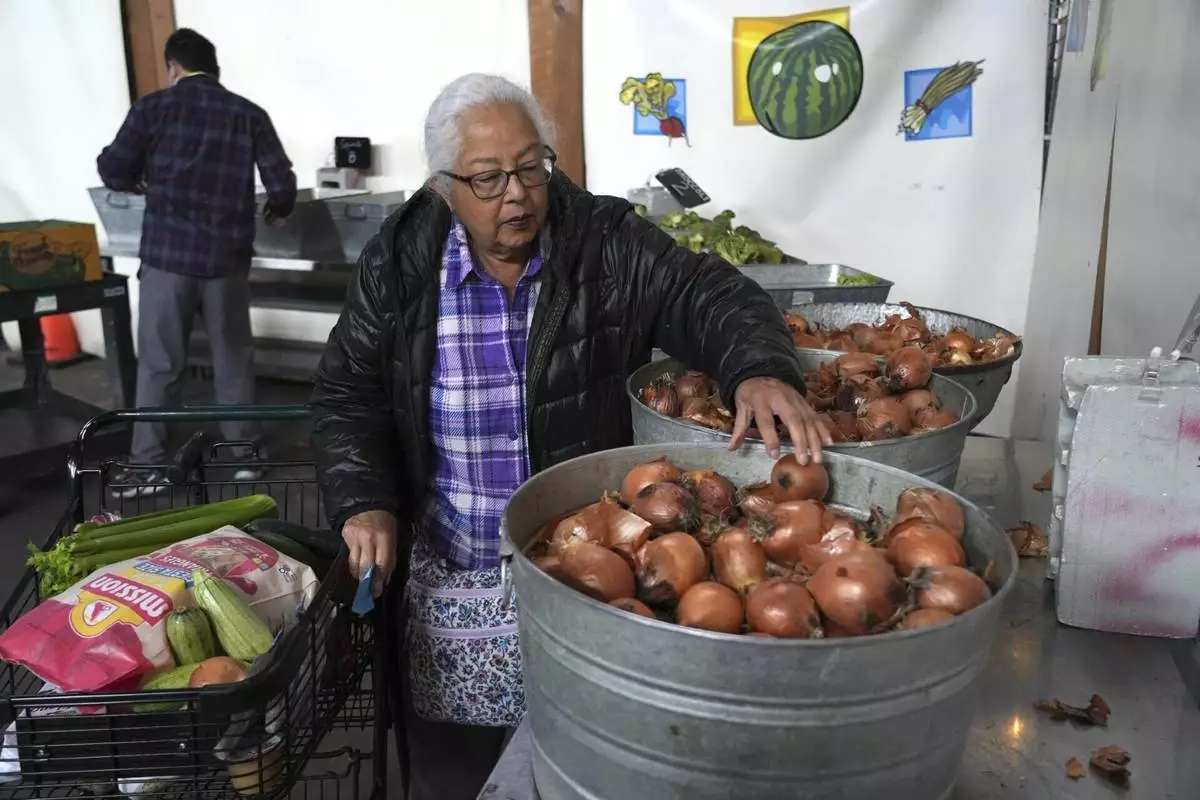
Alameda resident Beatriz Cortez picks up groceries at the Alameda Food Bank on Friday, April 25, 2025. (AP Photo/Terry Chea)
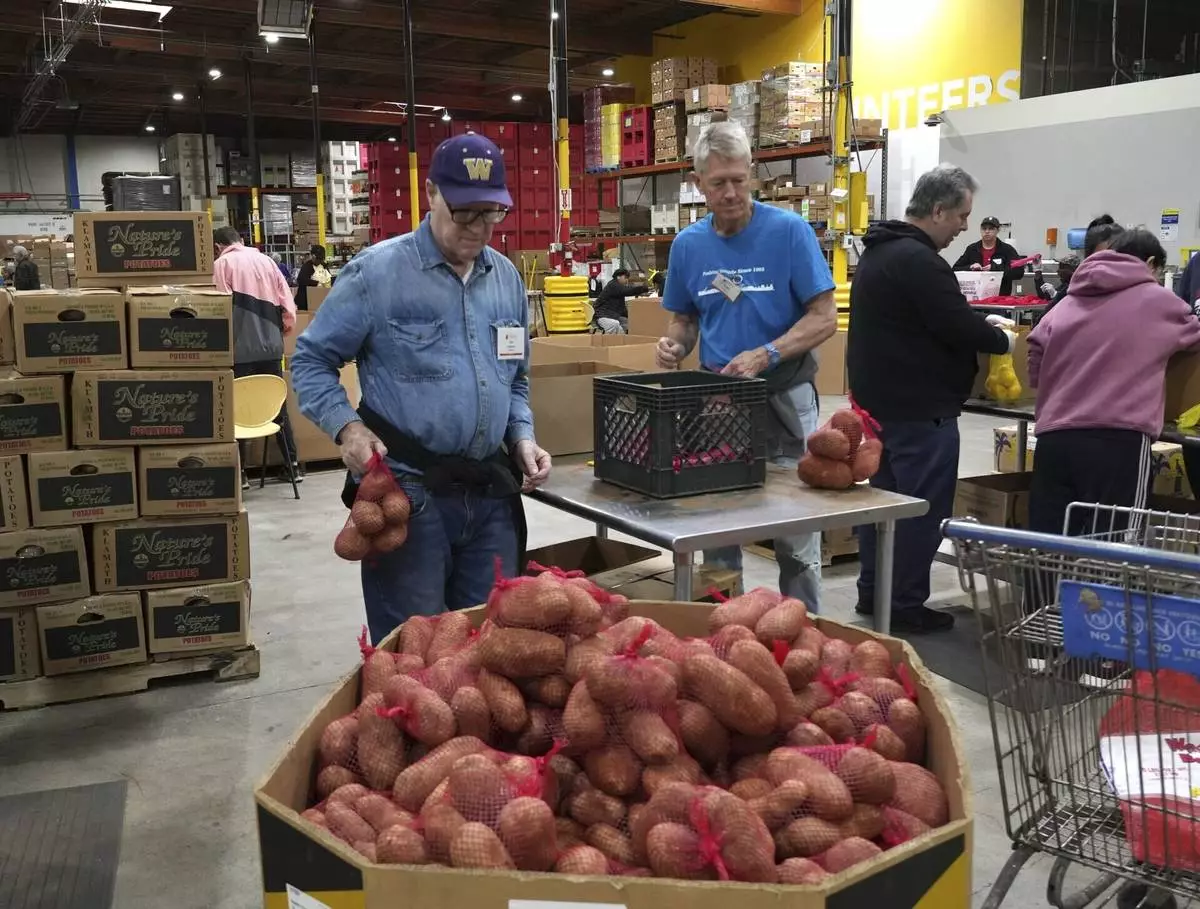
Volunteers pack produce at the Alameda County Community Food Bank in Alameda, Calif., on Friday, April 25, 2025. (AP Photo/Terry Chea)
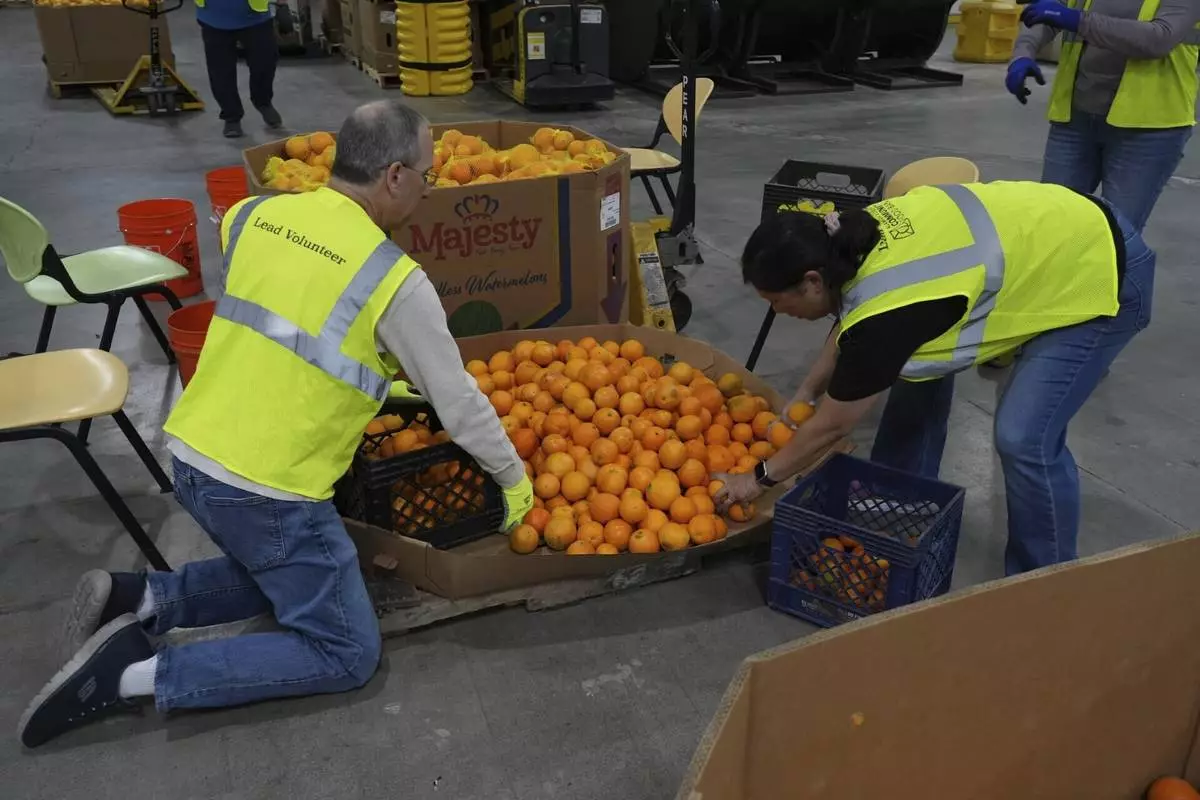
Volunteers pack produce at the Alameda County Community Food Bank in Alameda, Calif., on Friday, April 25, 2025. (AP Photo/Terry Chea)

Volunteers pack produce at the Alameda County Community Food Bank in Alameda, Calif., on Friday, April 25, 2025. (AP Photo/Terry Chea)
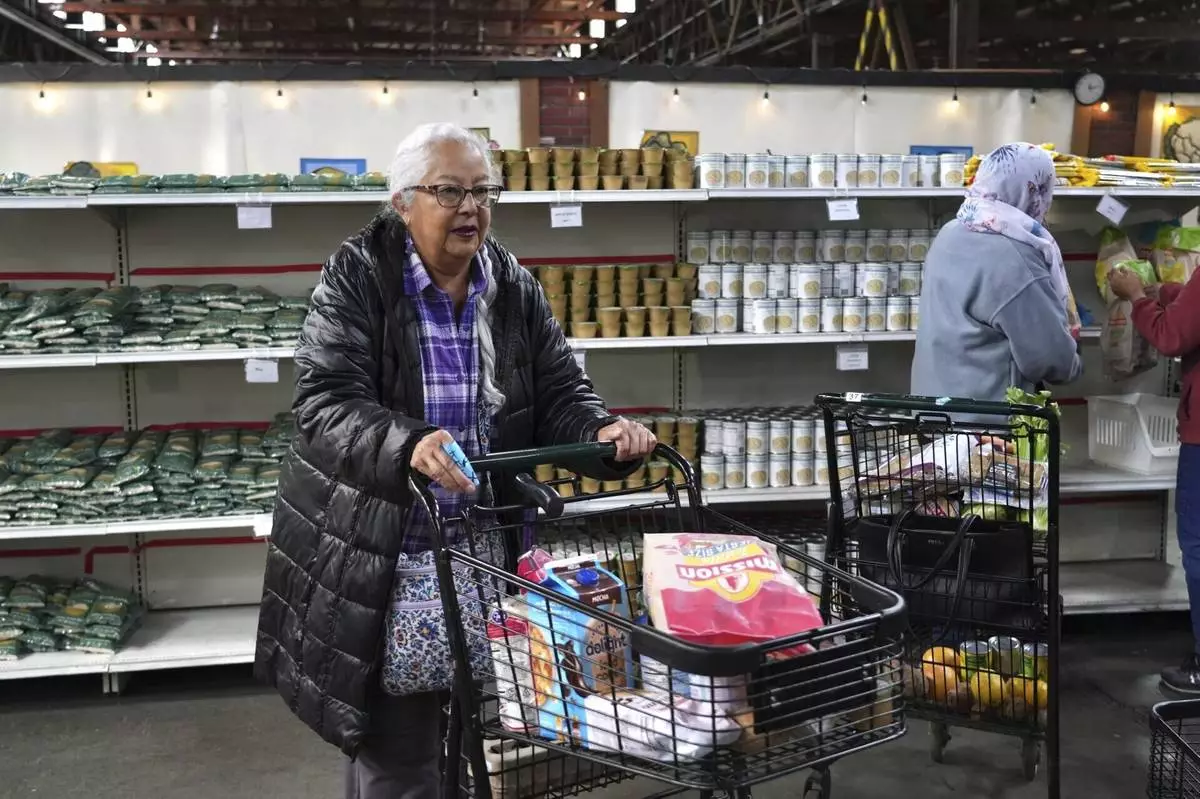
Alameda resident Beatriz Cortez picks up groceries at the Alameda Food Bank on Friday, April 25, 2025. (AP Photo/Terry Chea)
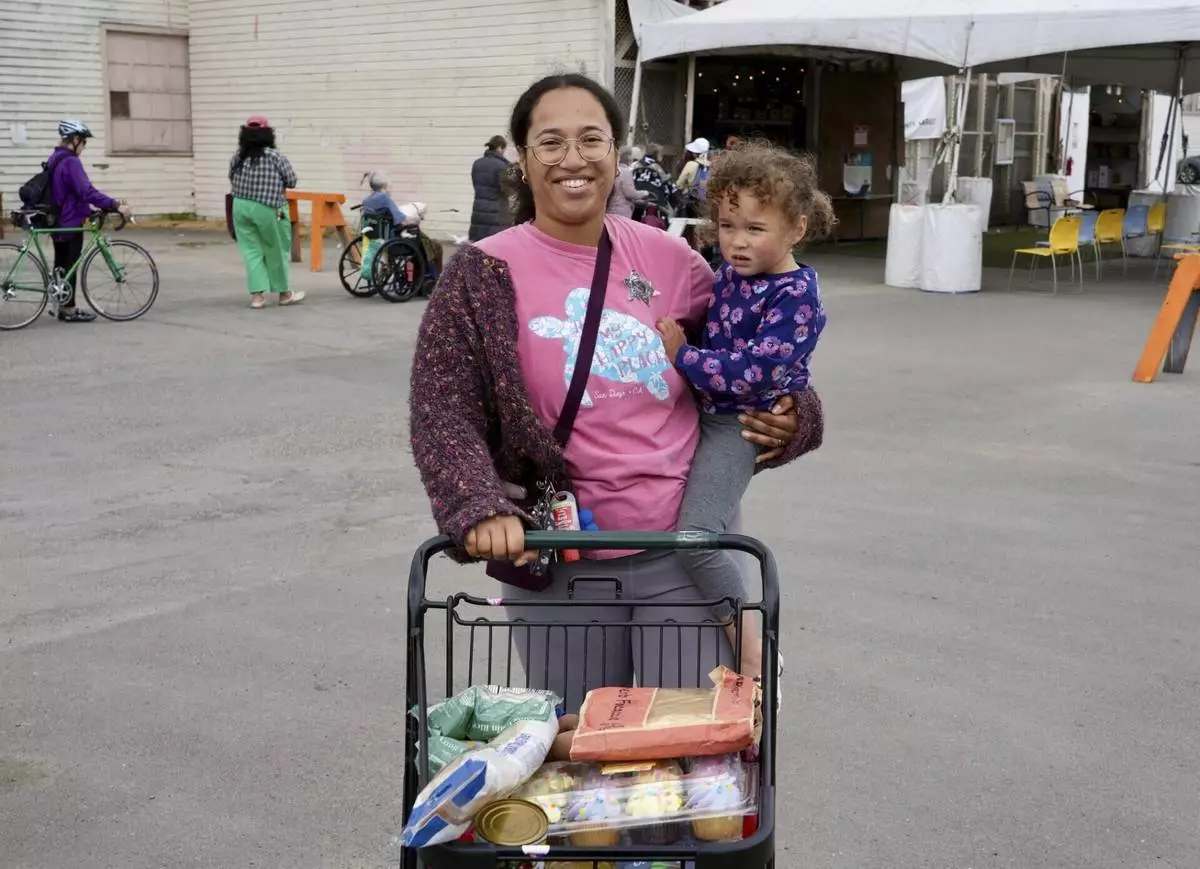
Alameda resident Christina Santamaria stands outside the Alameda Food Bank with groceries and her daughter in Alameda, Calif. on Friday, April 25, 2025. (AP Photo/Terry Chea)
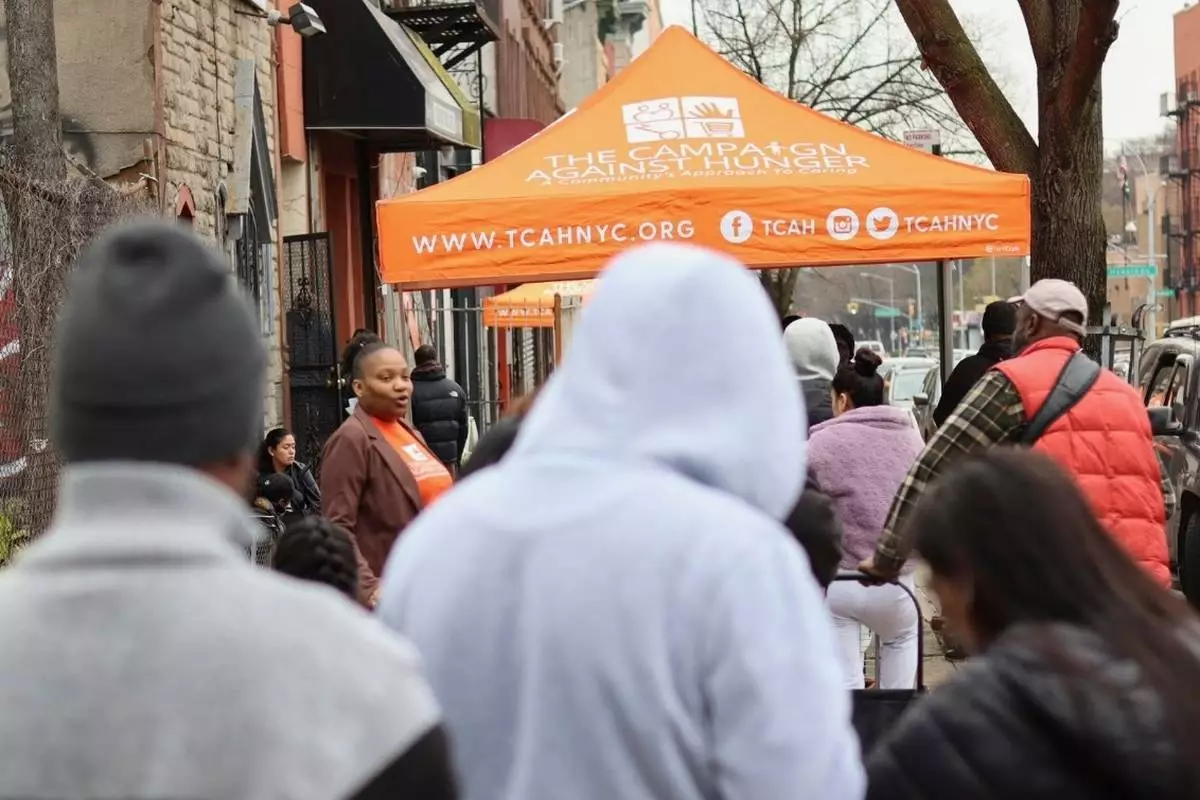
People line up for groceries outside The Campaign Against Hunger's distribution center in the Brooklyn borough of New York, Tuesday, April 15, 2025. (AP Photo/James Pollard)
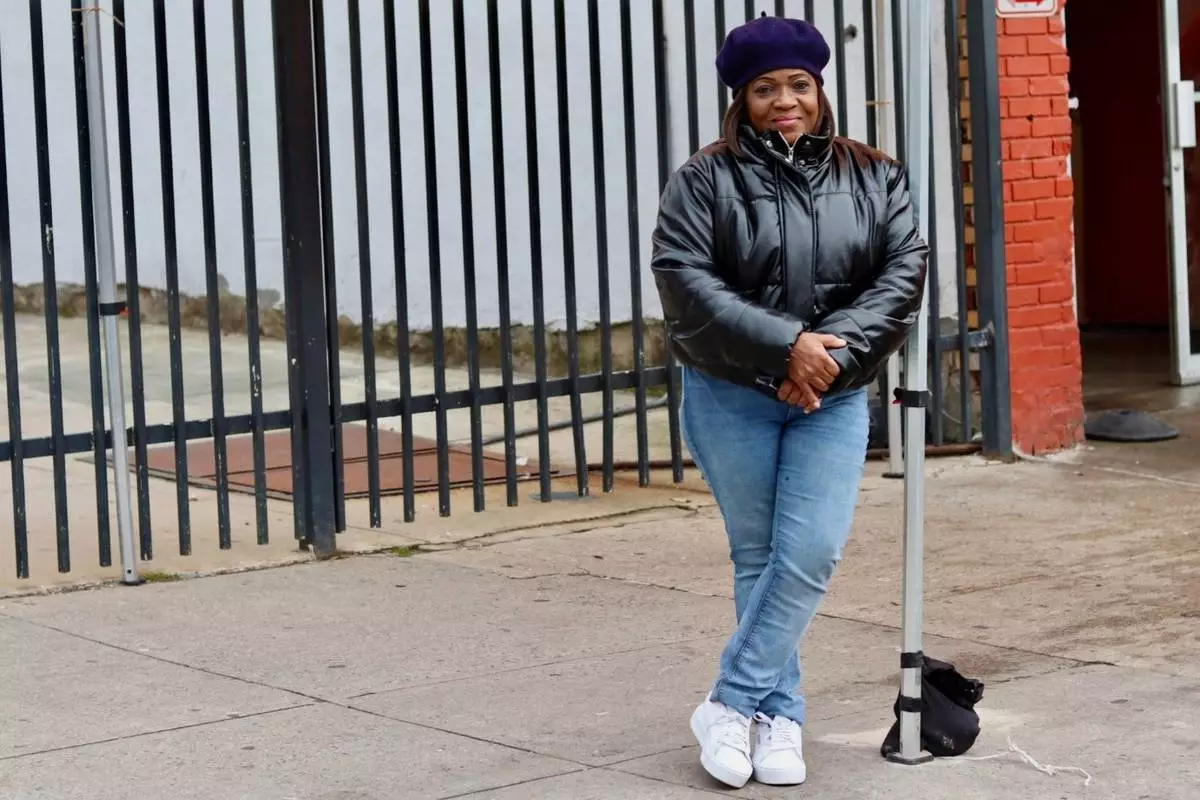
Kim Dennis, 65, visits The Campaign Against Hunger's distribution center in the Brooklyn borough of New York, Tuesday, April 15, 2025. (AP Photo/James Pollard)

The Campaign Against Hunger Executive Director Melony Samuels sits in her office in the Brooklyn borough of New York, Tuesday, April 15, 2025. (AP Photo/James Pollard)







